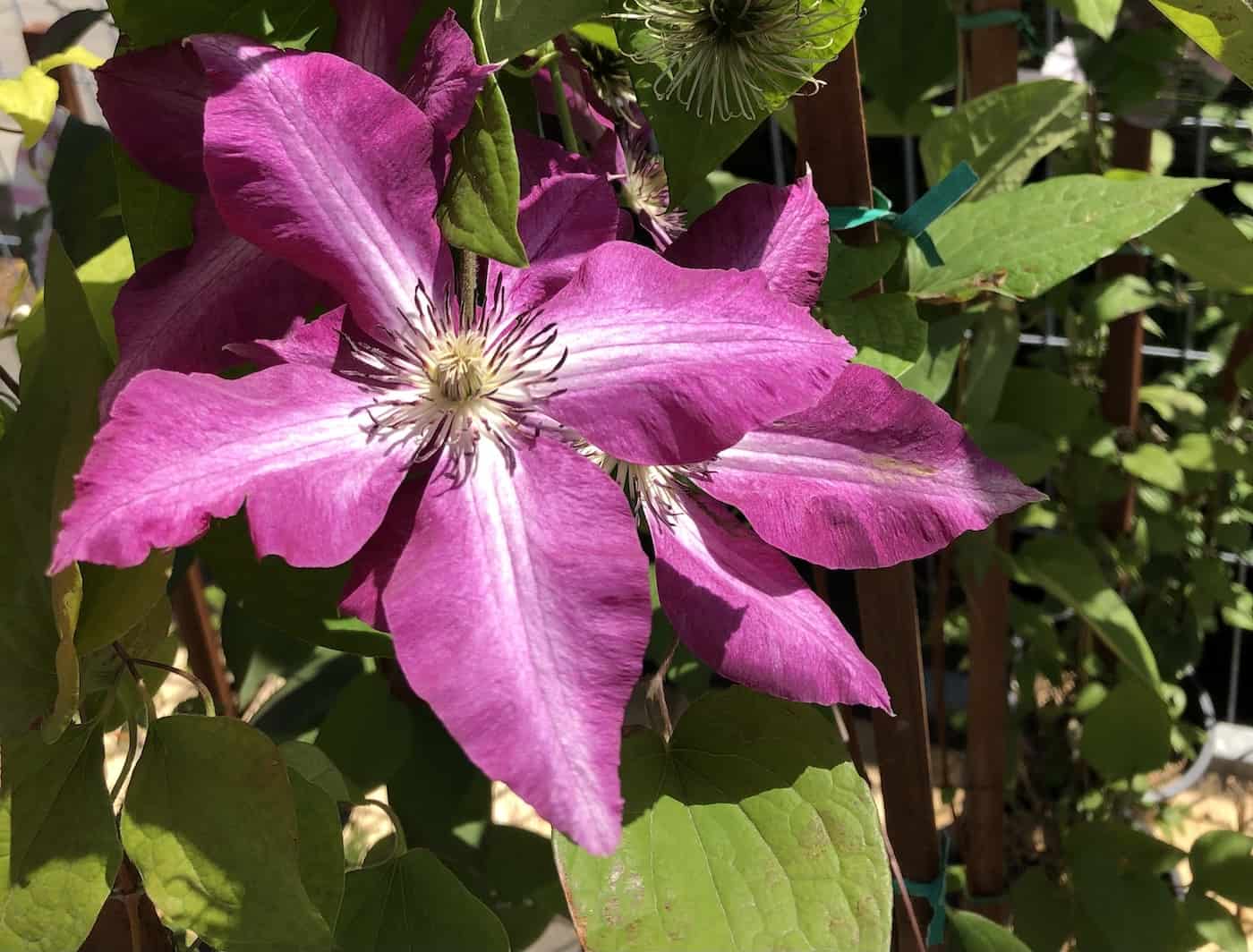Wondering how to grow vines? These versatile, eye-catching plants can add color, fragrance, and even fruit to your outdoor space. Let’s look at selecting the perfect vine, planting techniques, maintenance, and creative ways to incorporate vines into your garden.
How to grow vines
To successfully grow vines, choose a species that thrives in your local climate and soil conditions. Provide adequate support structures like trellises or fences for climbing vines. Ensure consistent watering and good drainage, as vines vary in their moisture needs. Regularly prune and train the vines to encourage healthy growth and maintain the desired shape and size.
Some of the most popular vining plants include:
- Clematis: Known for its showy flowers in various colors.
- Morning glory: Features trumpet-shaped flowers.
- Passionflower: Recognized for its intricate, unique flowers.
- Sweet pea: Admired for its fragrant and colorful blossoms.
- Honeysuckle: Renowned for its sweet-smelling flowers.
- Wisteria: Recognizable by its hanging clusters of fragrant flowers.
- Jasmine: Popular for its highly fragrant white or yellow flowers.
- Ivy: Most commonly grown for its evergreen foliage.
- Virginia creeper: Noted for its red fall color and bright berries.
- Grapevine: Cultivated both ornamentally and for fruit production.
- Bougainvillea: Celebrated for its vibrant bract colors.
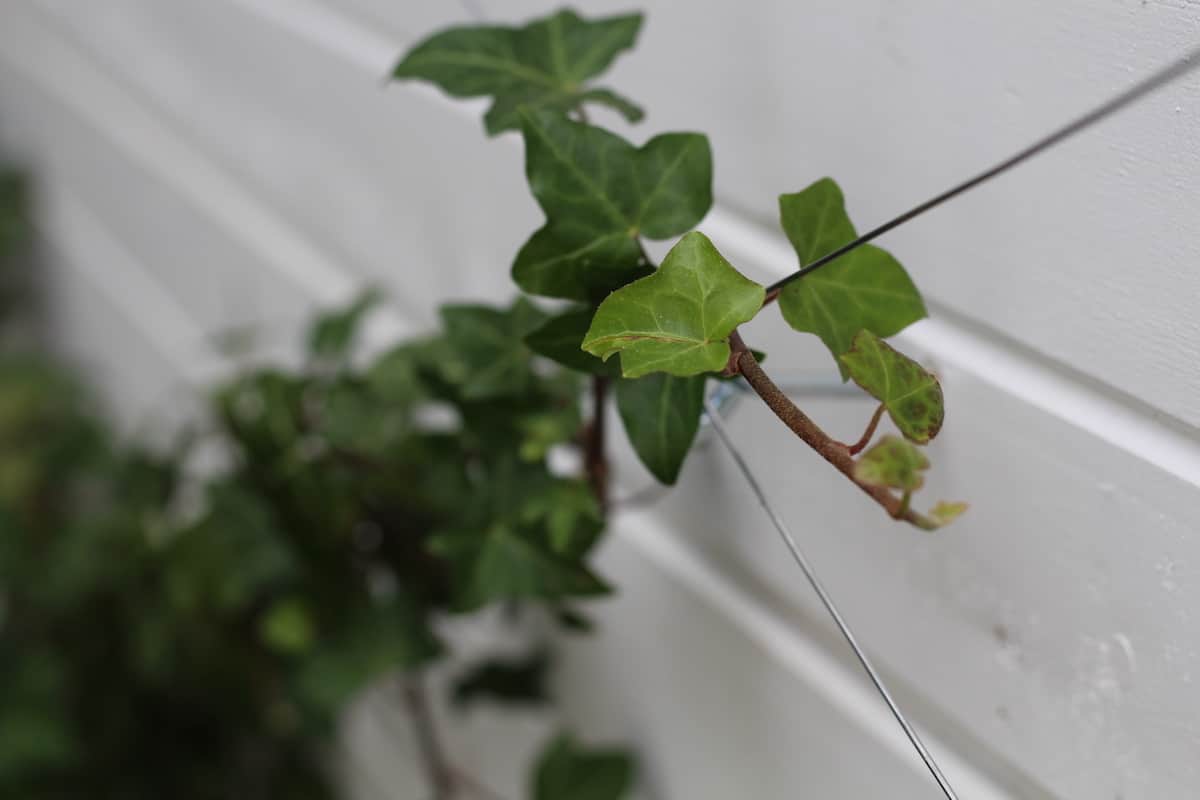
Most vining plants require some form of support to climb on, such as trellises, fences, pergolas, or stakes. Some vines attach themselves to the vertical support, while others do best if gently tied to the wire or trellis.
While the light requirements might vary, many vining plants prefer full sun to bloom profusely. However, some, like certain clematis varieties, might need shaded roots with sunlit tops.
Well-draining soil is essential for most vining plants. Enriching the soil with compost can help boost fertility. Regular watering, especially during dry periods, is crucial. That said, avoid waterlogged conditions. Some vining plants, especially those with showy flowers, can benefit from regular feeding during the growing season.
Depending on the desired look or space constraints, vines might need guidance or training in their early stages to grow in a specific direction. Pruning can be essential for maintaining the shape, removing dead or diseased growth, and, in some cases, stimulating blooming.
Common pests for vining plants include aphids, spider mites, and caterpillars. Regularly inspect plants and treat them as necessary.
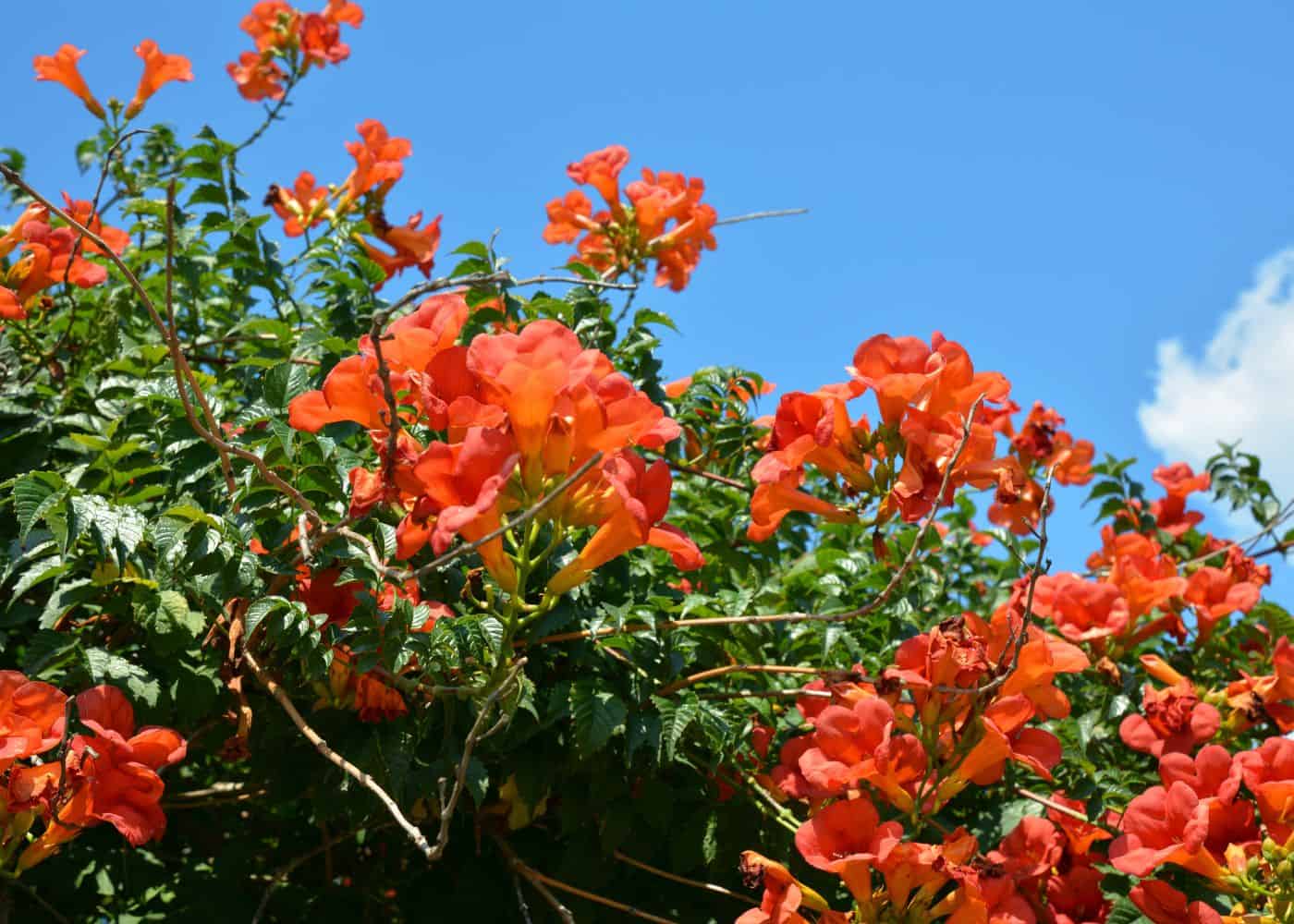
Choosing the right vine for your space
Consider factors such as climate, sunlight, soil type, and desired purpose (like privacy, shade, or aesthetics) when picking the right vine for your garden. Are you looking for flowering vines that can thrive in warmer climates? Bougainvillea and jasmine are great options, while the Japanese hydrangea vine is perfect for temperate climates. Wisteria, ivies, and creeping figs are fantastic options for planting in temperate climates as well.
Where winter temperatures can drop well below freezing, several vines are well-suited due to their cold-hardiness. Cold-hardy vines include clematis, Boston ivy, trumpet vine, Virginia creeper, and Kentucky wisteria. These vines can add vertical interest and beauty to your garden, even in colder climates.
Thinking of adorning your home’s walls with climbing plants? Some surfaces, like vinyl siding, wood siding, and wood shingles, can be enhanced with beautiful climbing vines, such as climbing roses or non-invasive climbing plants. These vines not only add elegance to your home but also provide shade, keeping the temperature down during summer and even strengthening the building’s structure in some cases.
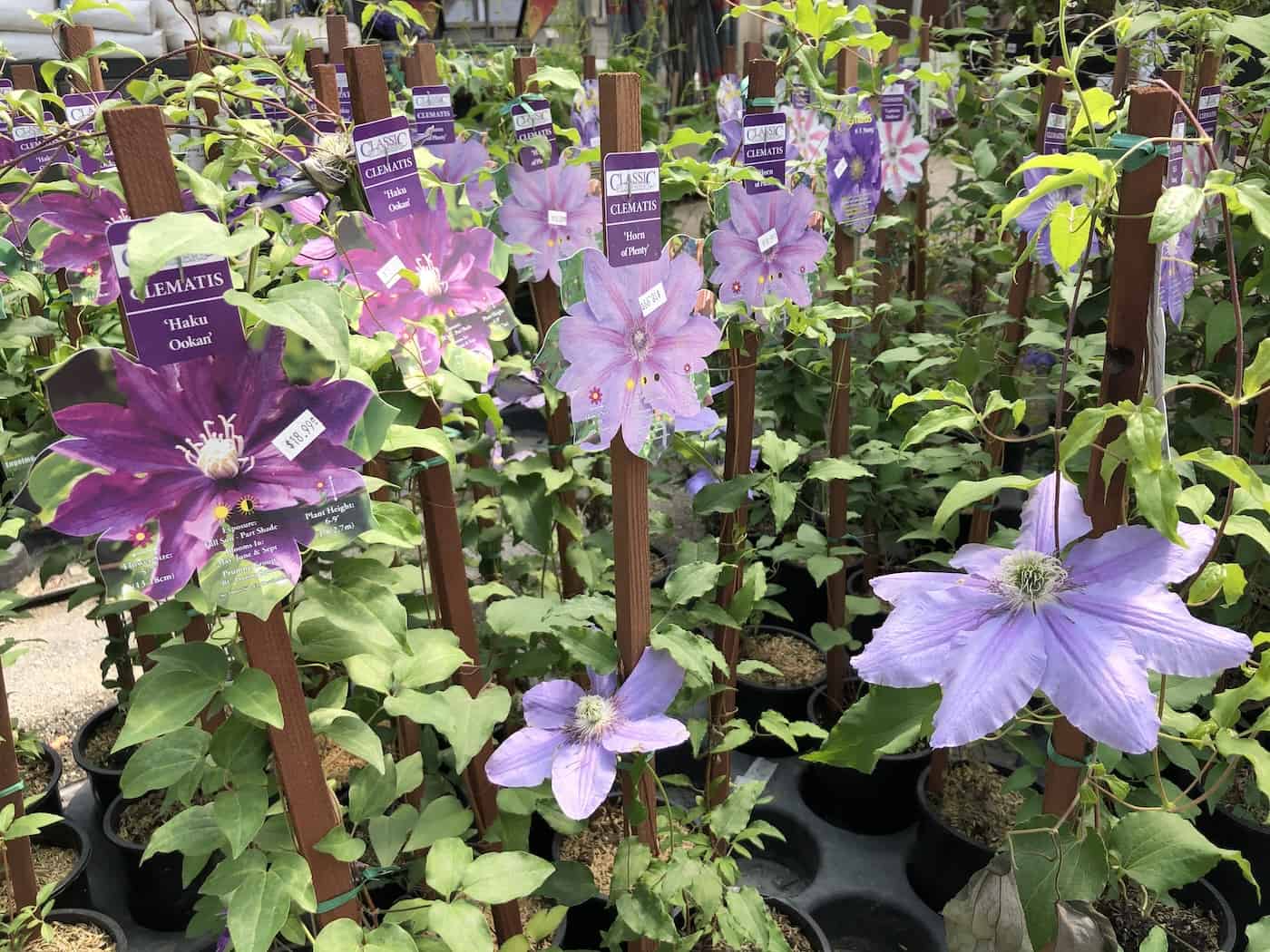
Preparing the planting site
Preparing the planting site adequately by letting in sunlight, allowing for air circulation, investigating soil conditions, and building support structures is vital for the growth of your chosen vine. Most vines require at least 6 hours of direct sunlight daily for optimal growth. Organically rich soil is another key component for healthy vine growth.
Soil preparation
The importance of soil preparation for vines cannot be overstated, as it bolsters drainage and fertility, leading to robust, healthy growth. Adding compost, composted manure, or other organic matter to the soil can significantly improve its quality for vines.

Support structures
The success of your vine largely hinges on choosing a support structure that aligns with its climbing method. Trellises, poles, and obelisks are all great support structures for vining plants. For example, twining plants thrive on sturdy supports with narrow bars that they can wind around, while climbing hydrangeas use small aerial rootlets to cling and don’t require much assistance, especially on rough surfaces like masonry. Providing the right support structure not only ensures your vine’s healthy growth but also adds an interesting visual dimension to your garden.
Planting techniques
Container-grown vines and bare-root vines are the two primary planting techniques used for vines. Each method has its own unique advantages and proper planting methods, which we’ll discuss in the following subsections.
Container-grown vines
When planting a container-grown vine, follow these steps:
- Dig a hole that is at least twice as wide as the root ball and one or two inches deeper.
- Gently remove the vine from its pot, untangle any girdled roots, and place it in the hole at the same level or slightly higher than it was growing in the container.
- Water the root ball generously, let the water drain, and then fill the hole with the soil you removed, tamping it firmly around the root ball.
Annual vines like morning glory, moonflower, and vining nasturtium can be started indoors from seeds 4 to 6 weeks before transplanting, allowing you to watch your plants develop and grow.
Bare-root vines
Bare-root vines are resilient grapevines sold and planted without soil around their roots. They are typically soaked in water before planting to ensure the roots stay hydrated and healthy.
To plant a bare-root vine, dig a hole that is 12-14 inches deep and wider than the spread-out roots, providing ample space for a successful planting. The ideal time to plant bare-root vines is from late March through the end of April, ensuring your vines get the best possible start in their new home.
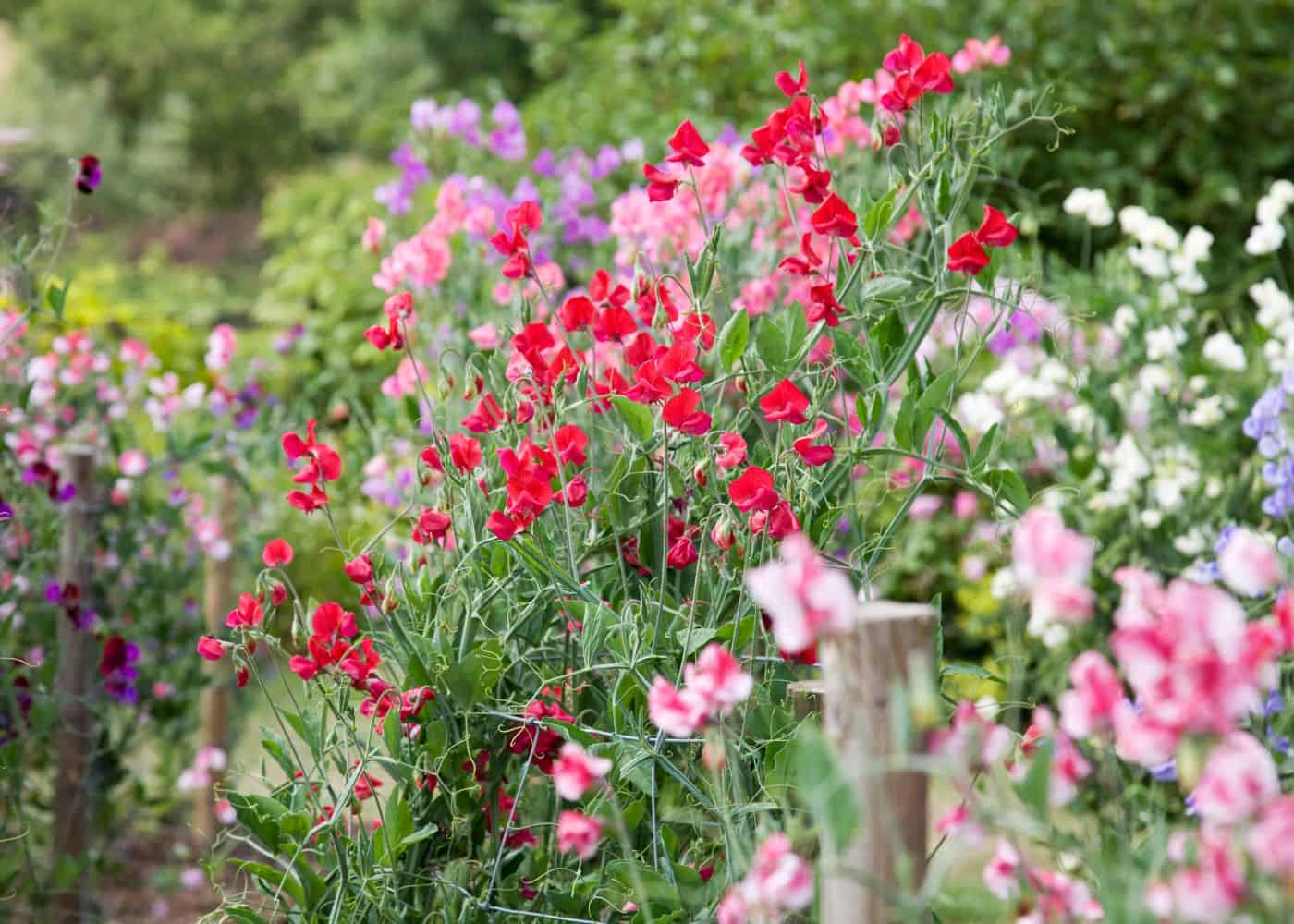
Caring for vining plants
Maintaining healthy vines involves proper watering, fertilizing, pruning, and training. We will delve into each aspect in detail, ensuring that your annual vine thrives and contributes to the beauty of your garden over the years.
Watering and fertilizing
Vines need sufficient moisture and thrive with a nourishing soak once a week. It’s best to water your vines in the morning before 10 am or in the evening, avoiding the intense sunlight between 10 am and 4 pm.
For optimal growth, a balanced organic fertilizer with equal proportions of nitrogen, phosphorus, and potassium is recommended. Mulching with compost once or twice a year can enhance the growth of annual vines, and feeding them twice during the growing season can further boost their growth.
Pruning and training
Pruning and training are essential for promoting healthy vine growth and preventing damage to structures. Pruning involves selectively removing dead or diseased branches and shoots, while training involves carefully tying the vine to a support structure to direct its growth.
Vines can be pruned annually during the winter or dormant season, typically between January and March, for optimal growth. To train vines for vertical gardening, securely attach the larger stems to the trellis using fabric ties or plant ties and gently support the stems, wrapping them around the structure using rubber ties.
Popular types of vines
A plethora of flowering and edible perennial vines, each unique in their beauty and functionality, are available for your garden. With so many vines to choose from, we will examine some popular options to assist you in pinpointing the vines that best meet your needs.
Flowering vines
Flowering vines, such as sweet autumn clematis, honeysuckle, and wisteria, can add a burst of color and fragrance to your garden. Pink clematis and star jasmine are just a couple of beautiful examples of flowering vines. To create a visually stunning display, consider planting a mix of flowering vines, including Cypress Vine, Firecracker Vine, Black-Eyed Susan Vine, Chocolate Vine, Climbing Hydrangea, Virginia Creeper, Moonflower, False Hydrangea Vine, Mandevilla, Nasturtium, Morning Glory, Hyacinth Bean, Scarlet Runner Bean, and Sweetpea.
Fruiting vines
Why not add a tasty touch to your garden with edible vines? Some beloved types of edible vines include:
- Grapes: They grow exceptionally well in warmer soil and benefit from regular watering.
- Kiwi: This fruit vine requires a sturdy support structure and prefers well-drained soil.
- Beans: Varieties such as lima beans, yard-long beans, Kentucky Wonder beans, and winged beans all flourish on vines.
Troubleshooting common problems
Even the most experienced gardeners face challenges with their vines. This section will tackle common problems such as pests, diseases, and invasive vines, providing solutions to maintain your garden’s health.
Pests and Diseases
Monitor your vines for signs of infestations or infections, such as:
- Damage to leaves, stems, or fruits
- Eggs or larvae on leaf undersides
- Visible pests crawling or flying around the plants
- Unusual discoloration or wilting of the leaves
If you spot any issues, treat the plant with an appropriate pesticide or fungicide, following the instructions on the label for successful treatment. Regularly checking your few vines and taking proactive measures can help ensure their long-term health and beauty.
Invasive Vines
While vines can enhance your garden’s beauty, some species can become invasive, so it’s important to exercise caution when planting them. Invasive vines like Algerian Ivy, Chinese Wisteria, English Ivy, Japanese Honeysuckle, and Kudzu can overtake other plants and even damage structures if not managed properly. To control the growth of invasive vines, cut the vines at the base, apply herbicides to freshly cut stems, remove flowers and seed heads, and compost the plant debris. On the other hand, non-invasive options like Boston Ivy can be a better choice for your garden.
Creative ways to use vines in your garden
Vines offer endless possibilities for enhancing your garden’s beauty and functionality. This section will delve into utilizing vines for vertical gardening and creating privacy screens, thereby optimizing your outdoor space.
Vertical gardening
Vertical gardening is an innovative way to maximize space and add visual interest to your garden by training vines to grow upward on structures like trellises, walls, or containers. Popular vines for vertical gardening include clematis, wisteria, ivy, morning glory, and trumpet vine.
By installing a trellis or other support structure and providing the right conditions for your chosen vine, you can create a gorgeous vertical garden that adds depth and variety to your outdoor space.
Creating privacy screens
Vines can create natural barriers and enhance privacy in your outdoor space, making them an excellent choice for privacy screens. To create a vine-covered privacy screen, install a trellis or structure for the vines to climb on, select a suitable vine, and train it to grow along the support.
With regular pruning and maintenance, your planting vines will grow to their full potential, providing a lush, green privacy screen that adds beauty and seclusion to your garden.


